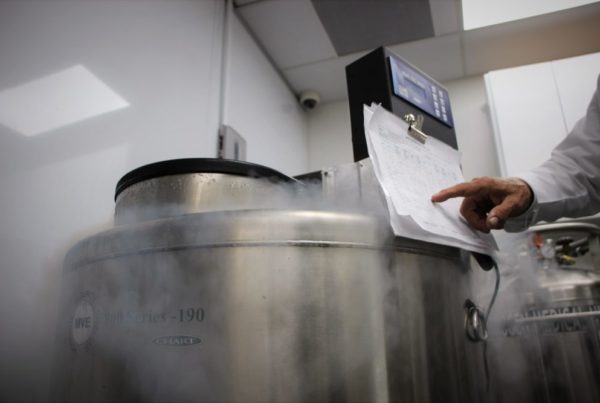If you travel just an hour outside Austin, there’s a place that starkly contrasts with the so-called “live music capital of the world.” East on Highway 71 towards Bastrop, the sounds of the city fade and all you’re left with are acres of untouched land, as far as the eye can see. If you take a right turn here, left turn there, you’ll find yourself at the gates of a cemetery.
It’s a small cemetery; a full walking tour would take just a couple minutes. The grass has grown wild and the trees tall. Many of the graves look handmade, fashioned with pieces of wood or cinder blocks. Others are adorned with fake flowers, ceramic angels – even bird baths.
These are the remains of the Oak Hill community.
A quiet, simple life: the history of Oak Hill
Oak Hill was a small farming community in Bastrop County. It’s a few square miles of land just north of Bastrop, bounded by the modern-day state highways 21, 290 and 95. The earliest marked graves in the cemetery date back to 1868, but the Texas State Historical Association estimates Oak Hill got its start around 1849.
The sleepy Texas community consisted of about 50 families. They were primarily farmers, growing cash crops like cotton and corn. They also raised livestock and planted vegetables, but these were mostly used for subsistence. The community had one school, one church and a general store. For decades, it was a quiet, simple life.
But unbeknownst to the townsfolk, their time on that small chunk of Texas farmland would come to an abrupt end.
Here comes the cavalry: the origins of Camp Swift
On the morning of December 7, 1941, the Japanese carried out a surprise military strike against the U.S. naval base at Pearl Harbor, Hawaii. According to Matt Abigail with the Handbook of Texas, about a month after the attack, the U.S. government announced its decision to build a massive army training camp in and around the area of Oak Hill.
“They tell the local residents there you have six months to pack up your things and make arrangements,” Abigail says.
He says the government paid residents a small lump sum for the land. Then residents moved to neighboring towns such as Elgin and Bastrop. After that, the U.S. Army began condemning and demolishing buildings in Oak Hill.
“There was a lady from Oak Hill who wrote commentary in the local newspapers and there was one article about the church,” Abigail says. “It was sort of the central hub of the community, and she said the day she watched an army bulldozer just bulldoze over the church…you can imagine how much that would hurt.”
On that freshly-scraped land in 1942, the U.S. government erected their army base and called it Camp Swift. Abigail says, many in the Oak Hill community understood this was in the national interest, but that didn’t stop them from mourning their loss.
“You live in a small town like that and, obviously, you know everybody,” he says. “Then all of a sudden everyone gets scattered into the wind.”
And just like that, the farmers were out and the soldiers were in.
Camp Swift was the largest army training and transshipment camp in Texas. It covered more than 55,906 acres and had 2,750 buildings designed to hold 44,000 troops. That’s not including the 3,865 German prisoners of war.
At it’s peak during World War II, the camp was home to as many as 90,000 troops at one time.
The sleepy community of Oak Hill was transformed into something more like a bustling metropolis.
“You had this influx of infrastructure…and people…and money,”Abigail says. “So things changed very, very quickly.”
In addition to the influx of soldiers, the camp also brought civilian jobs in areas like transportation, defense and manufacturing. It was a huge demographic shift in a very short period of time. And this shift was happening all across Texas.
In 1940, Texas was still a majority rural state. By the end of the war in 1945, it was mostly urban.
“If you imagine, a county with 20,000 people and all of a sudden there’s 50,000 people,” Abigail says. “The local schools were overwhelmed, the police forces were overwhelmed…the sewer systems were overloaded. Just basic infrastructure problems of having such a massive population boom happen all at once.”
What’s left of the Oak Hill community
Camp Swift is still around, 75 years later. But it’s smaller. Instead of 55,906 acres, it’s 11,700 acres, today. The military reservation houses parts of the Texas National Guard, along with a medium-security federal prison and a University of Texas cancer research center.
Seventy-nine year old Bobbie Miller is a resident of Elgin. She lives just a few miles from the cemetery and says her husband’s father happened to be one of those displaced by Camp Swift.
“[He was] just a poor dirt farmer,” Miller says. “His wife had died in 1925 and he had 12 children.”
When asked how her husband’s family handled losing their home, Miller says it wasn’t easy but they felt it was their duty as citizens to comply.
“For the most part these farmers were patriotic,” she says. “If they didn’t have much choice in the matter they just packed up and got out as best they could. I’m sure it was hard.”
The government promised Oak Hill residents they could buy their land back when the war ended. But after World War II, the Korean War loomed, and many thought they’d just be displaced all over again. On top of that, the land’s value had skyrocketed since the families left, so many couldn’t return home even if they wanted to.
In the end, the Oak Hill community was never rebuilt. All that’s left is that old, rusted sign and the graves beneath it.
















